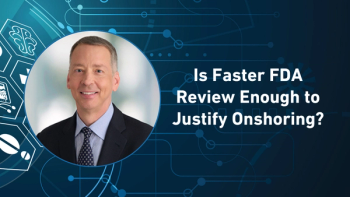
- Pharmaceutical Commerce - February 2024
- Volume 19
- Issue 1
The Value of 3PLs
The February issue is centered around third-party logistics providers, including new dynamics and future trends that affect this key supply chain link.
Highlighting Pharmaceutical Commerce’s inaugural issue of the new year is our
The "inventory" Saponaro refers to is the supply of prescription drugs, where sales are estimated to total $1.6 trillion by 2028, according to various forecasts. Speaking of which, in an
Rounding out our feature coverage this month is an update on the
When it comes to the Medicare Part D part of the equation, the PAN Foundation’s Amy Niles notes that the Inflation Reduction Act (IRA) has helped bring much-needed change, with the introduction of new reform known as the federal Low-Income Subsidy, or “
Meanwhile, in his latest “Commercialization Corner” installment, Bill Roth of IntegriChain continues his “
There is plenty of content to sift through, so please enjoy. And as always, we look forward to receiving your thoughts on how we can continue to improve your viewing experience.
Thanks for reading.
— Mike Hennessy Jr., President and CEO, MJH Life Sciences
Articles in this issue
almost 2 years ago
Pharmaceutical Commerce - February 2024 Issue (PDF)almost 2 years ago
New Year, New Aspirationsalmost 2 years ago
Access Insights and Information Aboundalmost 2 years ago
A Look at the Medicare 'Extra Help' Programalmost 2 years ago
Who Moved My Prescription? Part IIalmost 2 years ago
The Path for Prescription Drug Salesalmost 2 years ago
A Pharma Pricing and Agreements Primer in Today's Complex Landscapealmost 2 years ago
The Impact of 340B on Commercial Contractsalmost 2 years ago
DSCSA 2024 or 2023 Déjà Vu?Newsletter
Stay ahead in the life sciences industry with Pharmaceutical Commerce, the latest news, trends, and strategies in drug distribution, commercialization, and market access.





